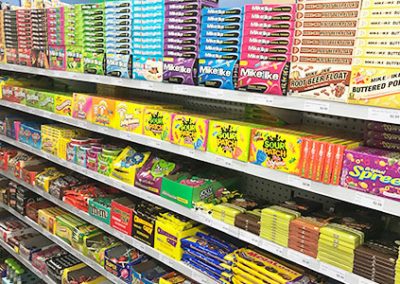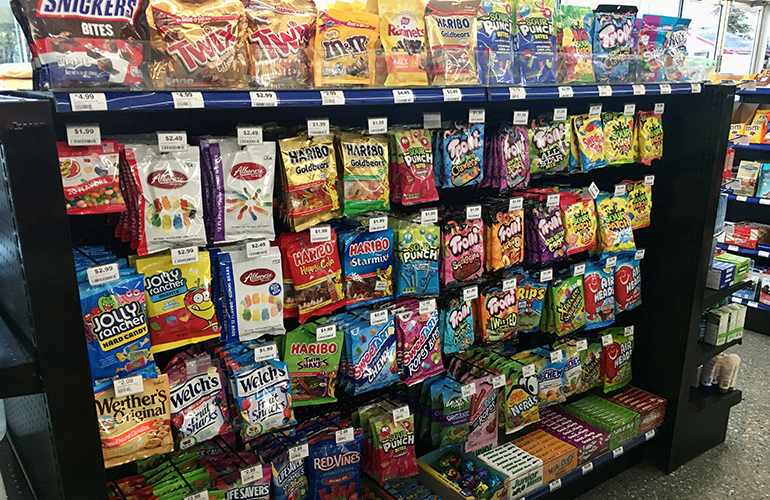4 Simple Techniques For I Luv Candi
4 Simple Techniques For I Luv Candi
Blog Article
I Luv Candi for Beginners
Table of ContentsThe Single Strategy To Use For I Luv CandiThings about I Luv CandiI Luv Candi Can Be Fun For AnyoneNot known Facts About I Luv CandiThe 10-Minute Rule for I Luv Candi
We have actually prepared a great deal of organization prepare for this sort of project. Here are the typical customer segments. Customer Segment Description Preferences How to Find Them Children Youthful customers aged 4-12 Colorful candies, gummy bears, lollipops Companion with neighborhood colleges, host kid-friendly occasions Teenagers Teens aged 13-19 Sour sweets, uniqueness products, stylish treats Engage on social media sites, collaborate with influencers Moms and dads Grownups with children Organic and much healthier alternatives, nostalgic candies Offer family-friendly promos, advertise in parenting publications Trainees Institution of higher learning trainees Energy-boosting sweets, budget-friendly snacks Companion with neighboring universities, advertise during exam durations Present Buyers Individuals searching for presents Costs delicious chocolates, gift baskets Create attractive displays, offer personalized gift options In assessing the economic dynamics within our sweet-shop, we've located that clients typically invest.Observations indicate that a regular client frequents the store. Particular durations, such as holidays and unique events, see a surge in repeat gos to, whereas, during off-season months, the frequency may diminish. chocolate shop sunshine coast. Determining the lifetime value of an ordinary customer at the sweet-shop, we approximate it to be
With these variables in consideration, we can reason that the average profits per consumer, over the course of a year, hovers. The most successful customers for a candy shop are frequently family members with young youngsters.
This demographic has a tendency to make constant purchases, increasing the store's earnings. To target and attract them, the candy store can use vibrant and playful marketing approaches, such as dynamic displays, memorable promos, and perhaps even organizing kid-friendly events or workshops. Developing a welcoming and family-friendly ambience within the store can additionally enhance the general experience.
The Main Principles Of I Luv Candi
You can also estimate your very own revenue by applying various presumptions with our economic strategy for a sweet-shop. Ordinary regular monthly profits: $2,000 This kind of sweet-shop is typically a little, family-run company, possibly known to citizens yet not drawing in large numbers of tourists or passersby. The shop may provide a selection of usual sweets and a few homemade deals with.
The shop doesn't usually carry rare or expensive things, concentrating instead on inexpensive treats in order to preserve normal sales. Presuming an average costs of $5 per customer and around 400 consumers monthly, the monthly profits for this sweet-shop would be about. Typical regular monthly earnings: $20,000 This candy shop gain from its calculated place in a hectic city area, attracting a multitude of customers seeking wonderful extravagances as they shop.
In enhancement to its diverse sweet option, this shop could also offer related items like present baskets, candy arrangements, and novelty products, providing several revenue streams - sunshine coast lolly shop. The shop's place calls for a greater allocate lease and staffing but results in greater sales volume. With an approximated average costs of $10 per consumer and regarding 2,000 consumers per month, this store can create
The Main Principles Of I Luv Candi
Situated in a significant city and vacationer destination, it's a large establishment, frequently topped numerous floorings and potentially part of a nationwide or international chain. The shop uses an enormous variety of sweets, including exclusive and limited-edition things, and product like top quality apparel and devices. It's not just a store; it's a location.
The functional costs for this kind of shop are considerable due to the area, size, personnel, and features offered. Presuming an average acquisition of $20 per customer and around 2,500 clients per month, this flagship shop might achieve.
Group Examples of Expenditures Typical Regular Monthly Price (Array in $) Tips to Minimize Expenses Lease and Utilities Store lease, electrical energy, water, gas $1,500 - $3,500 Take into consideration a smaller area, work out rental fee, and use energy-efficient lights and appliances. Stock Sweet, treats, packaging materials $2,000 - $5,000 Optimize stock administration to lower waste and track popular items to prevent overstocking.
Advertising And Marketing Printed matter, online advertisements, promotions $500 - $1,500 Concentrate on affordable digital marketing and use social networks platforms for complimentary promo. da bomb. Insurance coverage Service liability insurance $100 - $300 Look around for affordable insurance policy rates and take into consideration bundling policies. Equipment and Upkeep Sales register, show shelves, repair work $200 - $600 Buy pre-owned equipment when feasible and do routine maintenance to extend tools life-span
Some Of I Luv Candi
Bank Card Handling Charges Charges for refining card payments $100 - $300 Bargain lower handling fees with settlement processors or check out flat-rate options. Miscellaneous Workplace products, cleaning up products $100 - $300 Purchase in mass and search for discount rates on products. A sweet shop comes to be lucrative when its total profits surpasses its total set prices.

A big, well-located sweet shop would certainly have a greater breakeven factor than a small shop that does not need much profits to cover their expenditures. Curious regarding the profitability of your candy store?
The Single Strategy To Use For I Luv Candi

Economic downturns that reduce consumer costs can impact candy store sales and profitability, making it important for candy stores to manage their expenses and adapt to changing market conditions to stay profitable. These threats are commonly included in the SWOT evaluation for a sweet-shop. Gross margins and net margins are key indicators used to gauge the profitability of a sweet-shop business.
Essentially, it's the earnings continuing to be after deducting costs straight pertaining to the sweet stock, such as purchase prices from vendors, production prices (if the sweets are homemade), and staff wages for those associated with production or sales. Internet margin, conversely, consider all the expenditures the sweet-shop incurs, consisting of indirect expenses like administrative costs, marketing, rental fee, and taxes.
Sweet stores usually have an ordinary gross margin.For instance, if your sweet store makes $15,000 per month, your gross revenue would be about 60% x $15,000 = $9,000. Let's highlight this with an example. Consider a sweet store that offered 1,000 sweet bars, internet with each bar priced at $2, making the complete income $2,000. The shop incurs expenses such as purchasing the candies, energies, and wages for sales personnel.
Report this page